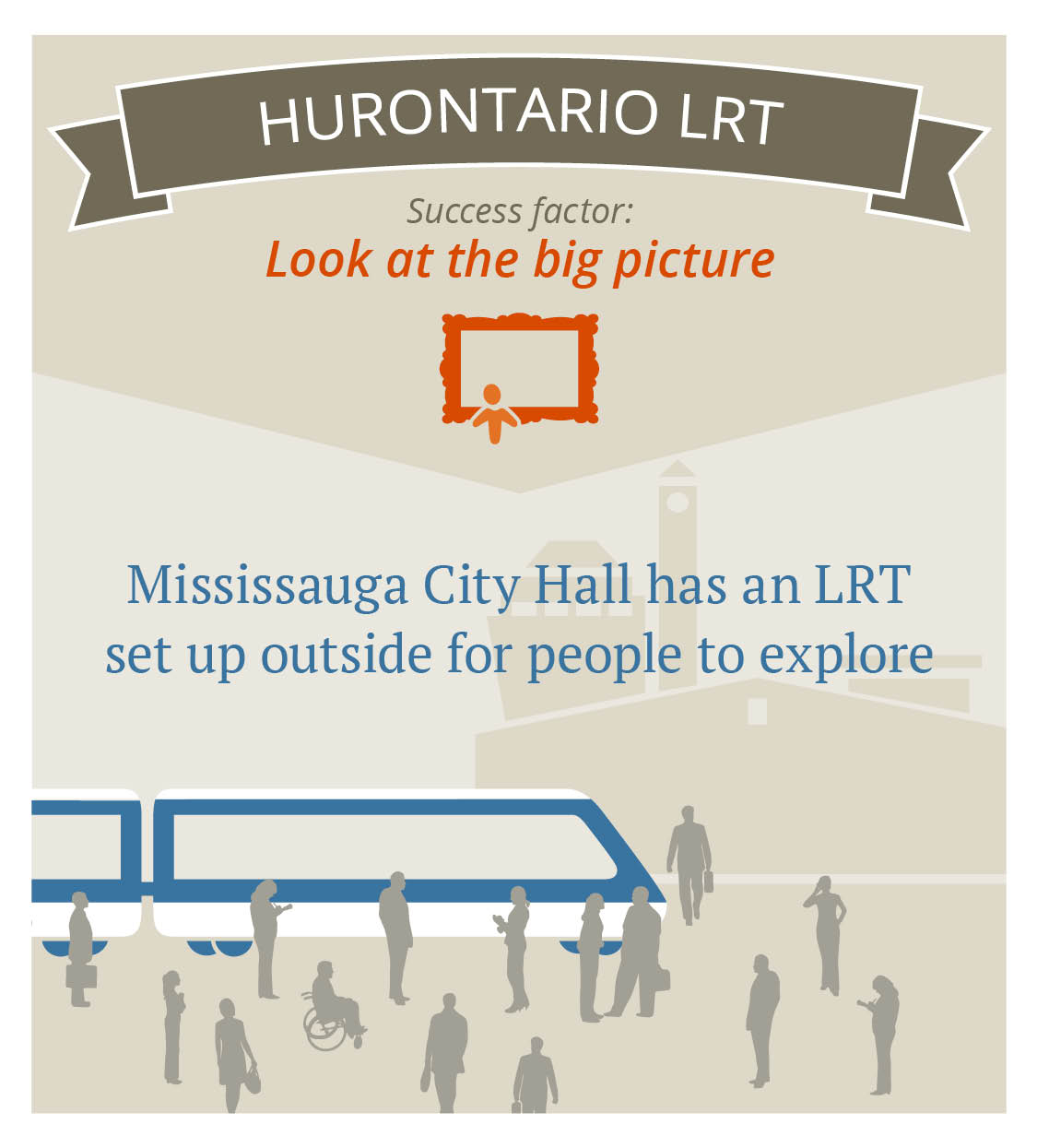Best practices and lessons learned in the Hurontario LRT
Story by Pembina Institute-
The current roll-out of rapid transit in Ontario is one of the biggest infrastructure builds in the province’s history, with over $30 billion in investment from the Province of Ontario and major inputs from the federal and municipal governments.
The Hurontario LRT is one of these projects. Planned in the City of Mississauga on Hurontario St. and into the City of Brampton to the Gateway terminal south of Steeles Ave., the LRT will connect to GO Transit, Mississauga MiWay and the Transitway BRT, and Brampton Züm. Importantly, one quarter of the corridor passes through employment areas, opening up more transit options for commuters. Construction is expected to begin in 2018.
With such significant investments at stake, it’s important to get the process right. In the report Getting on Board: Learning from planning and engagement around rapid transit projects in Ontario published by the Pembina Institute and Evergreen, we showcase local planning and engagement efforts around four rapid transit projects including the Hurontario LRT.
Some highlights from Metrolinx and the City of Mississauga are:
- In Mississauga, an LRT car has been set up outside of city hall and around the city at public events. Residents and passers-by can climb in, helping them to imagine what the LRT will look and feel like.
- The LRT team took City of Mississauga councillors to visit LRTs in other cities, helping them to visualize the possible outcomes in their own community and be ready to speak to their constituents about rapid transit.
- The LRT team makes an effort to meet people by being present at community events. Their cut-out cardboard trains and colouring pages have been a hit with kids, and have helped to grow project awareness by drawing in families and offering a space where parents can contribute
- As part of their downtown and gateway areas planning process, the Cities of Brampton and Mississauga organized a business symposium to understand the specific needs of the business sector. Developers, conservation authorities, transit agencies and residents also attended the symposium.
- The City of Mississauga also has a suite of secondary plans, such as its Downtown21 Master Plan, which have served as tools to plan for transit-supportive design.
Please note that we did not study the City of Brampton in this research.
To read the full report or see our infographic, blog and media release, visit the Pembina Institute website.
For more information on the project, visit the project websites offered by Metrolinx, the City of Mississauga and the City of Brampton.



Comments